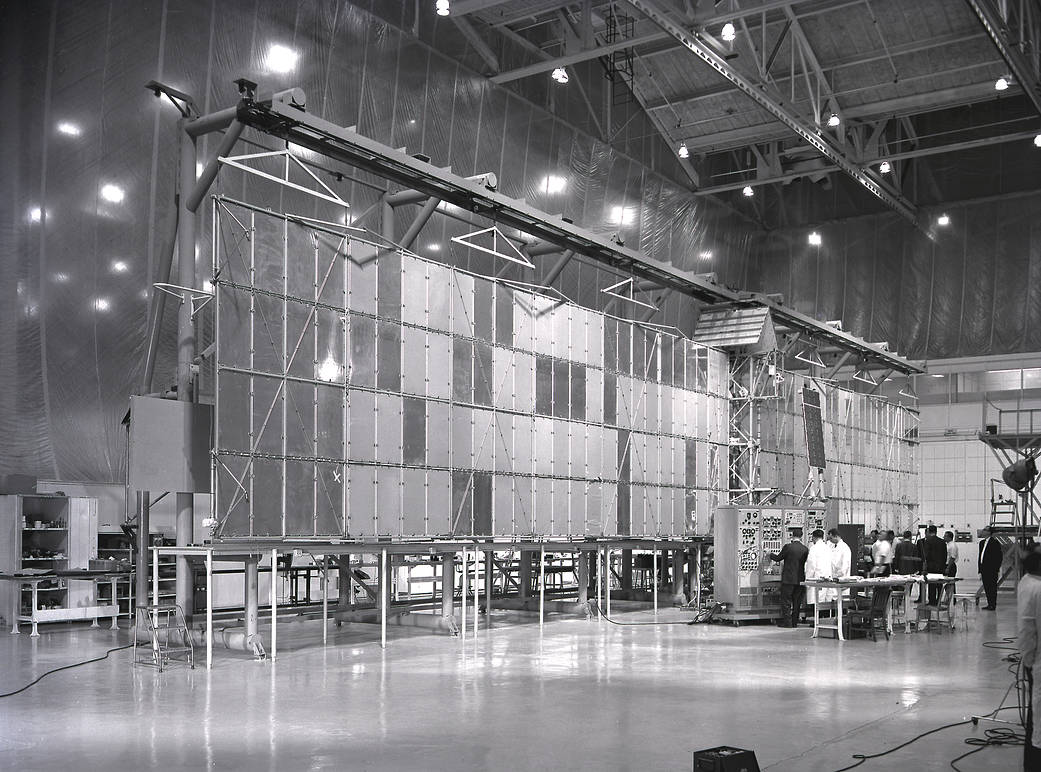
On Feb. 16, 1965, the eighth Saturn I flight known as the SA-9, Saturn I Block II, lifted off from Kennedy Space Center in Florida delivering the Pegasus I, which at the time was NASA’s largest unmanned instrumented satellite, into low Earth orbit. Once in orbit, the meteoroid detection satellite unfolded a series of giant panels, shown here in a laboratory at Fairchild Stratos Corp. in Hagerstown, Md., where the panels were manufactured.
In space, the panels formed a pair of wings measuring 96 feet across and comprising 208 panels that recorded punctures by potentially hazardous micrometeoroids at high altitudes. The satellite electronically recorded the size and frequency of particles in space. Engineers compared the performance of protected and unprotected solar cells. This data was important because scientists needed to characterize the environment, including micrometeoroid hazards that might damage the Apollo capsule on its way to the moon.Scientists and engineers at the NASA Marshall Space Flight Center in Huntsville, Ala., oversaw the production and design of both the Saturn 1 launch vehicle and the Pegasus I.
For more information on the Pegasus I satellite, visit the Marshall Space Flight Center history page.
Image credit: NASA/MSFC

























